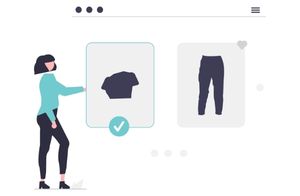Or go to our Shopify Theme Detector directly
How to Make $10000 a Month by Dropshipping
Last modified: April 17, 2024

If you’re looking to dropship then you probably are looking for a good, passive income. Many brands are starting to make $1000 to $5000 a month. However, some are earning $10,000 a month. If you would like to know how to make 10000 a month by dropshipping, then you can read our quick guide below.
| # | Name | Image | |
|---|---|---|---|
| 1 |

|
AutoDS
|
|
| 2 |
|
Spocket-World Wide Suppliers
|
|
| 3 |

|
Syncee - Global Dropshipping
|
|
| 4 |

|
Printful-Sell Printed and Embroidered Items
|
|
| 5 |

|
Sup Dropshipping
|
|
| 6 |

|
DSers-AliExpress Dropshipping
|
|
| 7 |

|
Zendrop - Dropshipping & POD
|
|
| 8 |

|
Dropshipman: Dropshipping & POD
|
|
| 9 |

|
AO - AliExpress Dropshipping by FireApps
|
|
| 10 |

|
Trendsi - Fashion Dropshipping
|
|
| 11 |

|
CJdropshipping
|
|
| 12 |

|
DropCommerce
|
|
| 13 |

|
Modalyst-Sell Brand Name Products
|
|
| 14 |

|
Ali Orders-Fulfill Orders Easily
|
|
| 15 |

|
Blanka - Private Label Beauty
|
|
| 16 |

|
Dropified-Automate Your Dropshipping Business
|
|
| 17 |

|
ProductPro
|
|
| 18 |

|
Spreadr App
|
|
| 19 |

|
Importify
|
|
| 20 |

|
Inventory Source
|
|
| 21 |

|
Roxie
|
|
| 22 |

|
Fulfillbot: Dropshipping Agent
|
|
| 23 |

|
KakaClo
|
|
| 24 |

|
Oberlo-Get the Best Produtcts for Your Site
|
|
|
Show More
|
|||
Choose the Right Products
The first thing that you want to do is to ensure that you’re choosing the right products. The products that you want to have are those that can offer you the right profitability and sell well. These on sites like AliExpress (through the Oberlo app) can be easy to find. A good profitability option is to be able to sell the products with a 40–70% markup.
Another thing that you want from the products is that you want a good review. Aim to get reviews that have an average rating of between 4.2 and 4.5. This is more trustworthy with customers than a straight-up five-star review average.
When getting started with Shopify dropshipping, prioritizing products with positive reviews within this rating range can enhance your store’s credibility and customer trust, fostering long-term success in the e-commerce landscape.
High Traffic Levels
The next thing that you want to do is to have the most traffic to your website. Consider using apps that can help you build your ranking on Google and other search engines. About two-thirds of your website’s traffic should come from search traffic, which isn’t challenging if you can complete SEO.
Then you should build traffic with social media. There are apps here that can help you by publishing content for you automatically.
Finally, you need to capture a lot of emails. Email is one of the best ways to convert leads to customers. The more on your mailing list, the more sales you’re going to make. You can use apps that gamify your website to add reasons for the customer to give you their email address. Or you can use an exit-intent popup app that will make it easier to grab their address.
FOMO and Urgency
Next, you need to create an environment that is going to entice audiences to convert while they are on your website. There are numerous FOMO processes that you can add to your website. For instance, you can add countdown timers, stock counters and more.
Urgency really can help you grow your business’ conversions that can help you make more money.
Trust
Finally, you need to build trust with your audience. There are several ways that you can do this. You can get reviews for products and your brand. You can also ensure that you add trust badges to your website. This can include guarantees, warranties and more to your products.
Finally, you can connect with influencers who can help convince their audience that you are trustworthy.
Advanced Strategies for Making $10000 a Month with Dropshipping
Enhancing Store Design and Functionality
A well-designed Shopify store can greatly influence customer trust and conversion rates. The store should be user-friendly, with a clean layout and high-quality images.
Incorporating videos and GIFs in product descriptions can further engage customers. However, it’s equally important to consider the realistic income potential of dropshipping. It’s also important to ensure the store’s theme is responsive and mobile-friendly.
Effective Use of Google Ads
Google Ads can be a powerful tool for driving targeted traffic to your dropshipping store. By focusing on keywords related to high-ticket items, you can attract customers who are already interested in purchasing.
It’s essential to monitor and adjust your ad campaigns regularly for optimal performance.
Marketing and Business Strategies to Making $10,000 a Month in Dropshipping
Leveraging Influencer Partnerships
Collaborating with influencers can open up new avenues for product promotion. This approach is particularly effective on platforms like Instagram and TikTok.
By partnering with influencers who have a significant following and high engagement rates, you can tap into their audience and drive traffic to your store.
Exploring High-Ticket Dropshipping
Focusing on high-ticket dropshipping can accelerate your journey to earning $10,000 a month.
This involves selling fewer but more expensive items, which can simplify inventory management and reduce the number of transactions needed to reach your income goal.
Adopting a Data-Driven Approach
Utilizing data analytics to understand customer behavior and preferences is key to refining your marketing and sales strategies.
However, it’s also important to manage expectations and consider the feasibility of becoming a millionaire through dropshipping.
Tools like Google Analytics can provide insights into traffic sources, customer demographics, and on-site behavior, helping you make informed decisions to grow your dropshipping business.
Conclusion: How to Make $10000 a Month by Dropshipping
If you want to know how to make $10000 a month by dropshipping, then you’ve got a lot of learning to do. It takes a lot of work. It is possible, but you can’t just do it. You will need to spend time optimizing your website for sales and conversions, and this is best done on Shopify.
Keep on reading about Dropshipping on Shopify. For example How to Dropship Luxury Brands and How to Pick a Niche for Dropshipping. Both part of our Shopify Dropshipping Apps and Shopify Dropshipping Themes lists. You can read more about Dropshipping on Shopify with our ultimate Dropshipping on Shopify guide.
-
How can I scale my dropshipping business as it grows?
Consider outsourcing tasks, expanding your product range, entering new markets, and reinvesting profits to scale your business effectively.
-
How do I calculate my dropshipping profit margins accurately?
Calculate profit margins by subtracting all expenses, including product costs, shipping, marketing, and overhead, from your total revenue. Ensure pricing reflects a healthy profit margin.
-
How can I find profitable products for my dropshipping store?
To find profitable products, conduct market research, analyze trends, use tools like Google Trends or product research software, and consider customer demand and competition.




 PageFly Landing Page Builder
PageFly Landing Page Builder  Shopify
Shopify  SEMrush
SEMrush  Website Maintenance
Website Maintenance  UpPromote
UpPromote